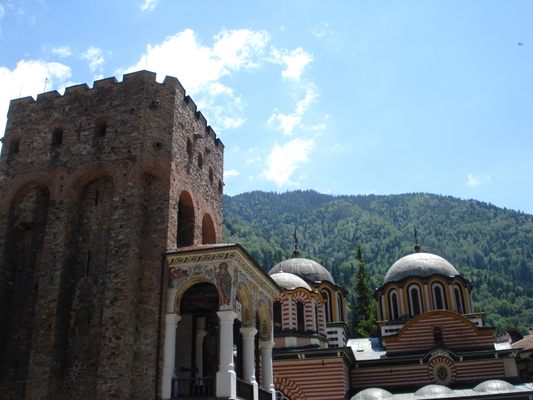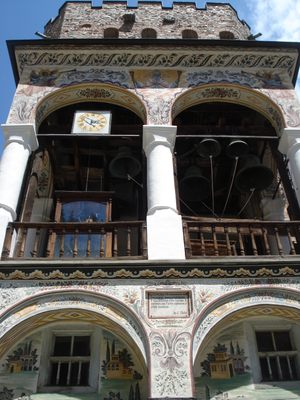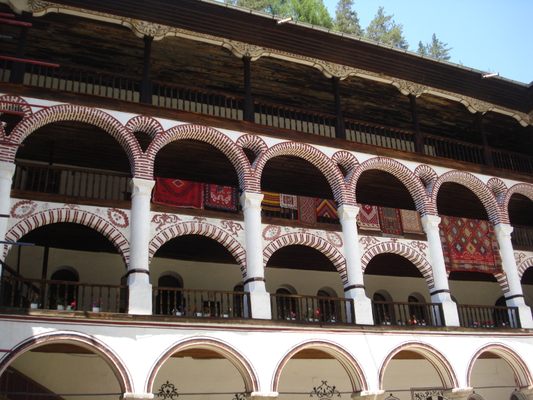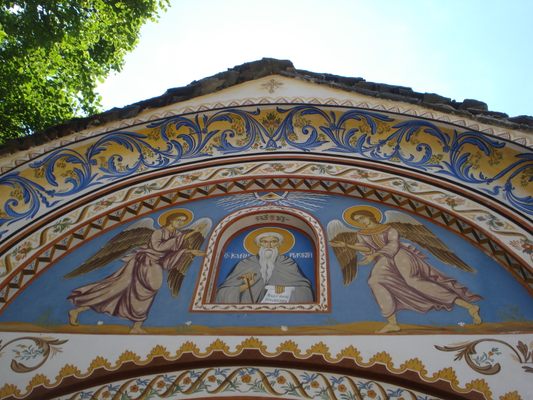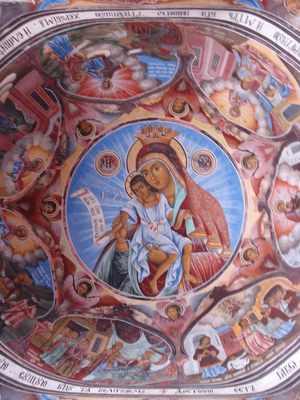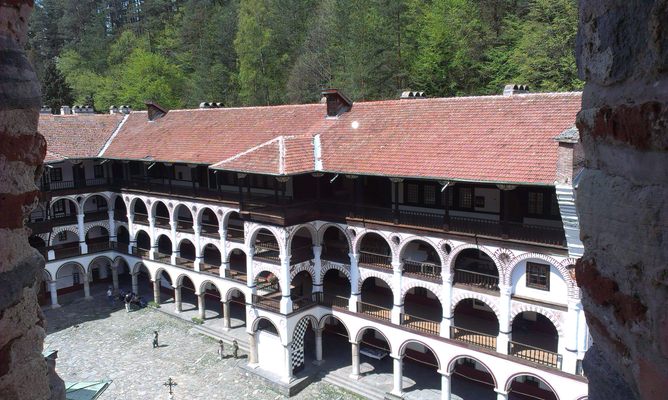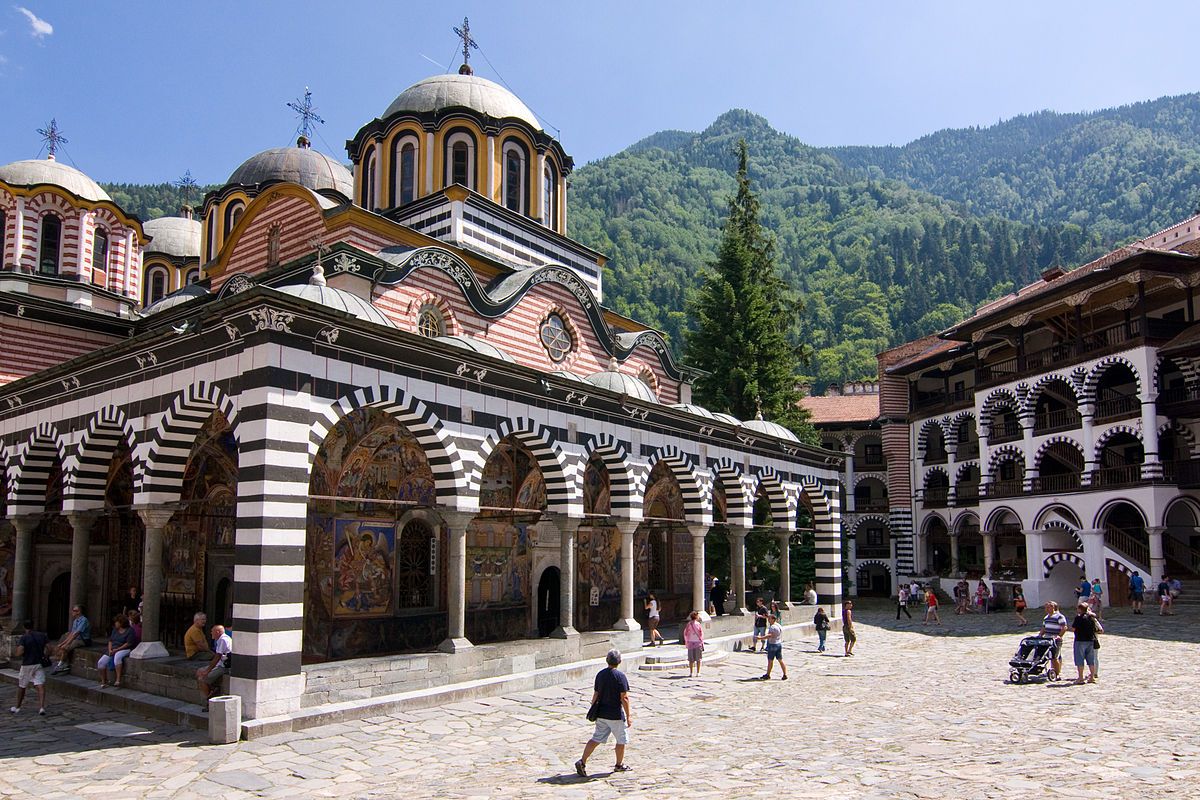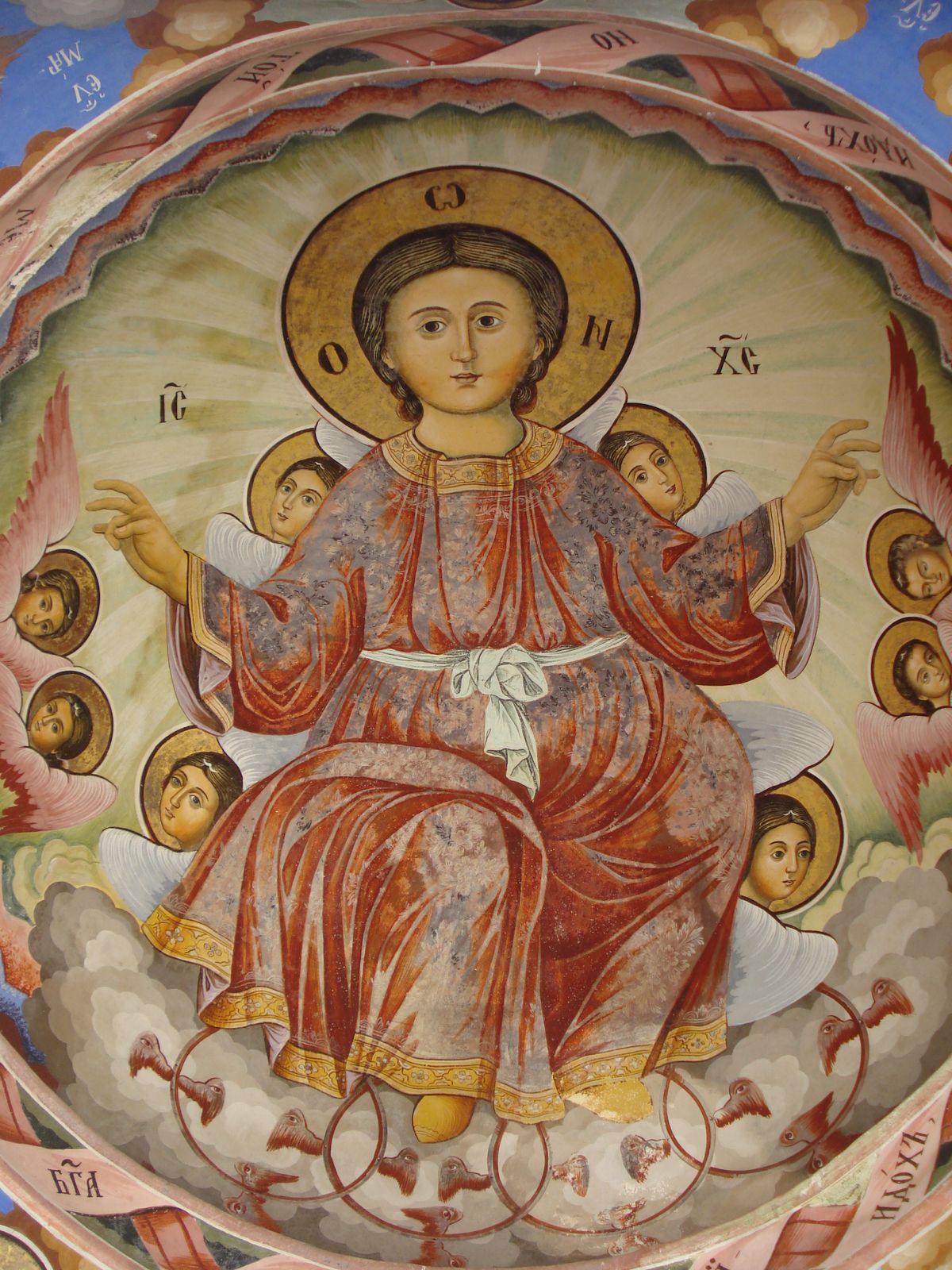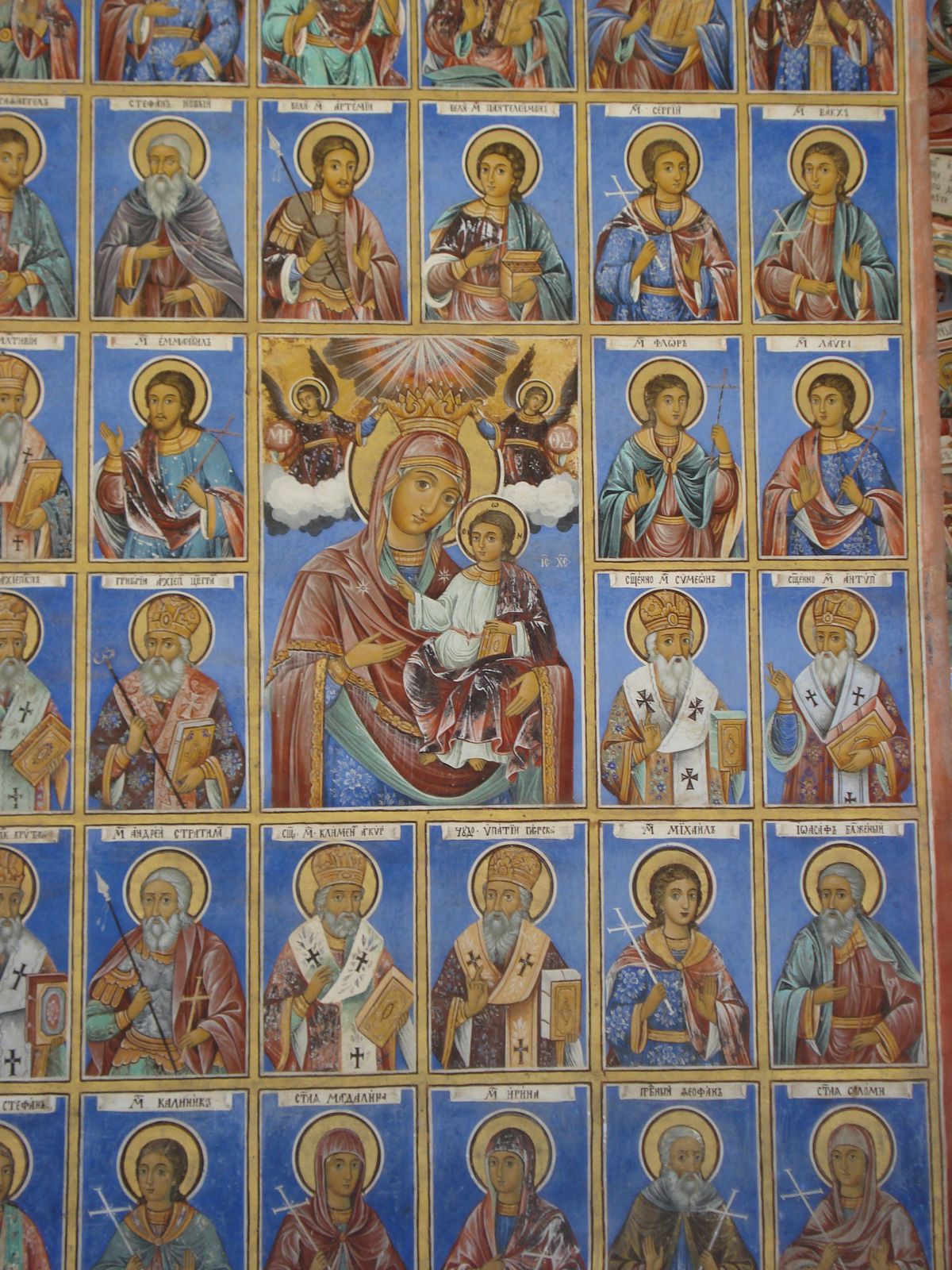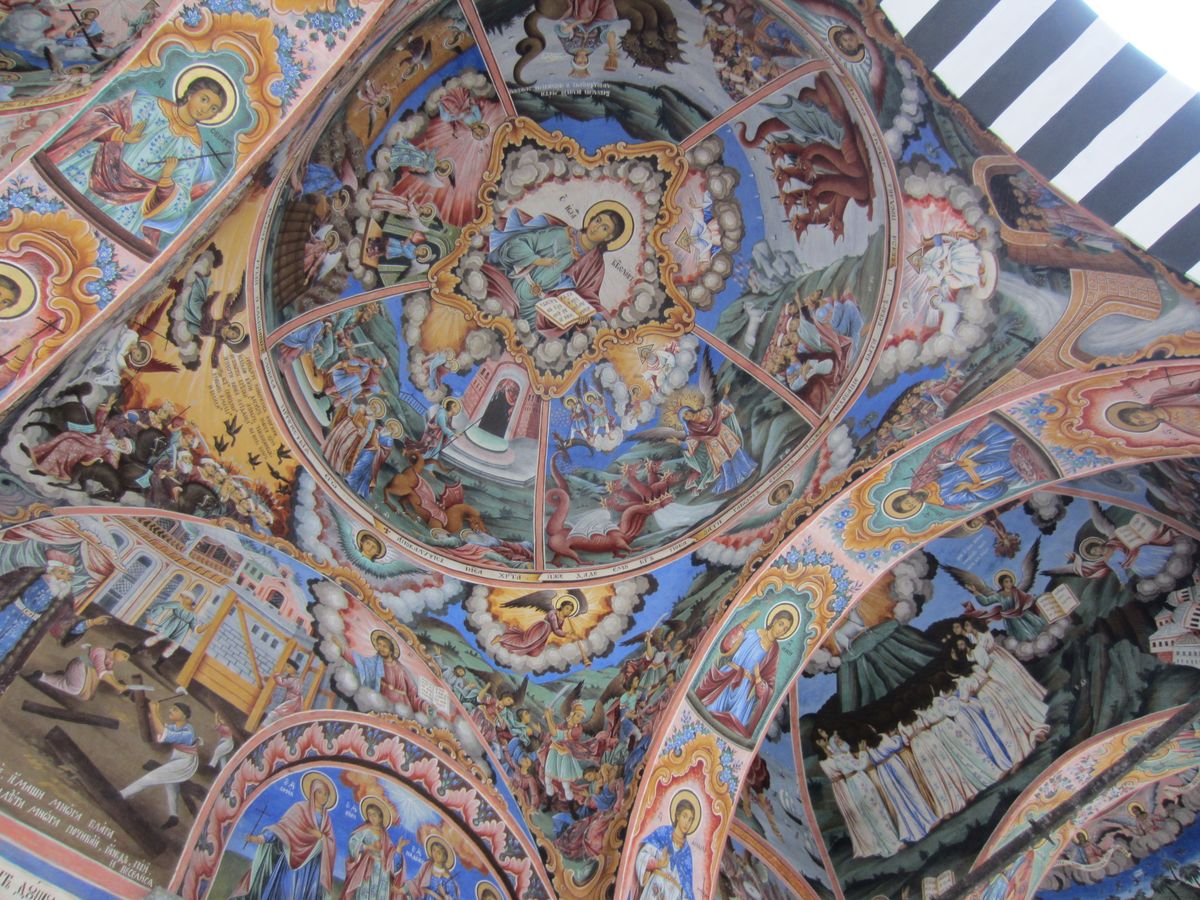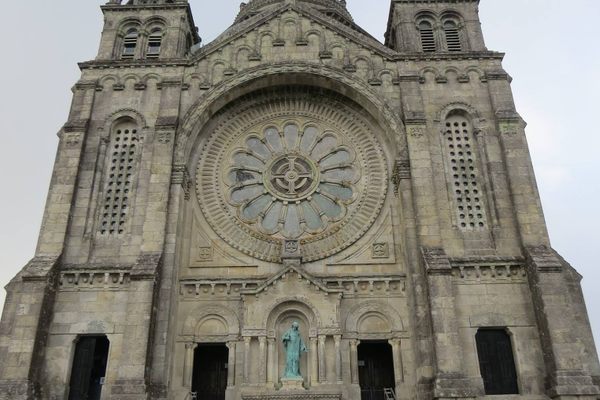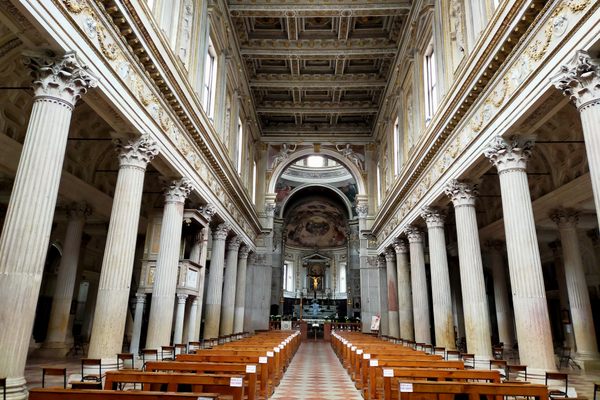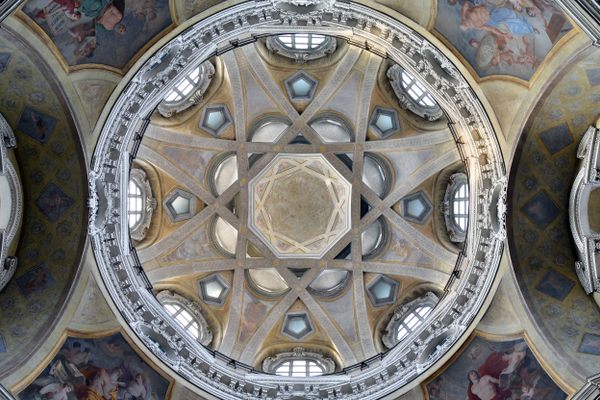About
Fortress-like, Rila Monastery has gone through many iterations to become the jeweled complex in the mountains that it is today. 1,147 meters (3,763 feet) up in the Rila Mountains, the first and largest monastery in Bulgaria has a history as complex as the region itself.
Rila Monastery was founded in honor of the ascetic St. Ivan of Rila (also know as St John of Rila) in the 10th century. He spent the last 20 years of his life praying in relative solitude at a cave some four kilometers away. St. Ivan was revered as a saint during his lifetime. Believers flocked to the remote cave to receive his blessing. Today visitors and pilgrims can still hike from the monastery to visit the saint’s cave — really just a small nook in the mountainside.
St. Ivan’s students built the first version of the monastery nearby, and it flourished under the patronage of Bulgarian rulers. However in the 14th century, the Ottoman’s arrival disrupted the peaceful life of the monks. They raided, looted, and destroyed Rila Monastery. In spite of these fallbacks, followers of the church rebuilt it in the late 15th century with help from the Russian Orthodox church and high ranking officials. Even the Sultana, Mara Branković, transferred the remains of St. Ivan of Rila from Sofia to Rila.
The monastery prospered again. But in 1833 fire ravished the complex and left only Hreliov’s Tower standing near the Rilska River. Stubbornly, Rila once again emerged from the ashes under the direction of Peter Ivanovich. He envisioned a structure true to the Slavic identity in the face of centuries of Ottoman occupation. Ivanovich built a main church, “Nativity of the Virgin,” in the quadrangle courtyard. Covering it are bright tempera frescoes by Bulgarian masters portraying religious icons, and scenes from heaven and hell.
Surrounding Hreliov’s Tower and the church is almost 9,000 square feet of the complex. There is a museum, over 300 monk cells, a library filled with rare manuscripts, and four chapels. The domes, black and white arches, and bright swaths of medieval-style paintings earned it a reputation as a masterpiece of Bulgarian National Revival architecture. Rila Monastery is regarded as a symbol of Bulgaria; it even has a place on their currency. In 1983 it was added to the UNESCO World Heritage List.
Rila Monastery continues to draw thousands of visitors despite its remote location. Monks still live there and welcome visitors. Occasionally they can be spotted in their black cloaks and hats walking across the courtyard, sometimes with a cat following. Visitors who want an extended stay on-location can do so in the living quarters and get a small glimpse into the monk life.
Related Tags
Know Before You Go
On the slopes of Rila, the highest Balkan Peninsula Mountain, in the valley of the Rilska River, 29 km east of the Sofia-Thessaloniki Highway. Rila, Kyustendil Province. Easiest to take a shuttle.
Community Contributors
Added By
Published
February 9, 2016












